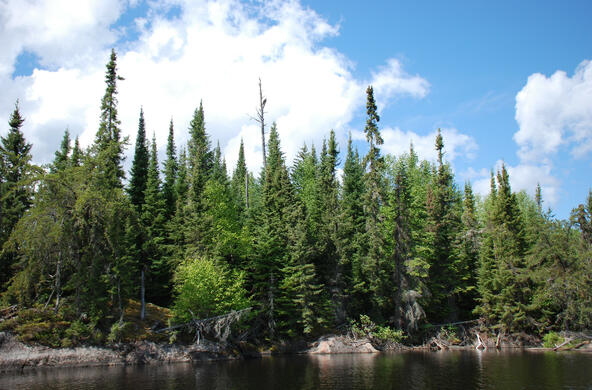Ninety one researchers from institutions across the country sign letter urging the EPA to follow the latest science on climate impacts from Biomass Energy
Millbrook, New York – In a letter submitted today to the Environmental Protection Agency (EPA), 91 of the country's leading scientists are urging the agency to draft new scientifically-sound rules to curb carbon emissions from biomass-fueled power plants. The letter comes as the EPA concludes a three-year evaluation period to more accurately determine the carbon emissions impacts of using biomass fuels such as whole trees and other plant materials in large-scale electricity generation.
To help inform the rulemaking, the EPA appointed a Science Advisory Board (SAB) in 2011 which found several concerns with the agency's draft carbon accounting framework, and made recommendations to more effectively assess the carbon emissions impacts of biomass energy production. Today's letter from the larger U.S. scientific community echoes the SAB's concerns and underscores several of its key recommendations.
"The EPA should be applauded for seeking input from the science community in its effort to more accurately understand the climate impacts of biomass energy," said Dr. William Schlesinger, president of the Cary Institute of Ecosystem Studies and co-signer of the letter. "As our letter indicates, scientists from across the country overwhelmingly agree with the findings and recommendations of the Science Advisory Board. Woody biomass is far from a sustainable energy solution. Rather, it poses significant threats to our climate and forests. We urge EPA to follow the science on biomass and develop rules that keep biomass energy producers accountable for their impact on the environment."
One of the most serious concerns about biomass energy is the growth of large-scale facilities, both domestically and abroad, that rely on the burning of whole trees - primarily wood pellets manufactured from forests in the Southeastern U.S. - to produce electricity. While biomass is often thought of as a source of renewable energy because the plant material used as fuel eventually grows back, a growing body of science shows that burning trees to generate electricity increases carbon emissions compared to fossil fuels like coal for 35 to 100 years or more.
The scientists' letter also underscores the critical role of forests in carbon sequestration. U.S. forests absorb more than 13 percent of the country's annual climate emissions each year. Once burned, that stored carbon is released back into the atmosphere. Furthermore, because whole tree biomass is less energy dense than coal, more is required to create the same amount of energy, resulting in more carbon emissions.
"Three years ago the EPA deferred tightening regulations for biomass energy production in order to gain a better understanding of the science around it," added Schlesinger. "Now, as this deferment period expires, we know more about the carbon impact of biomass than ever. While it is important to pursue legitimate forms of renewable energy, we can say without question that woody biomass isn't always one of them."
The Cary Institute of Ecosystem Studies is a private, not-for-profit environmental research and education organization in Millbrook, N.Y. For thirty years, Cary Institute scientists have been investigating the complex interactions that govern the natural world. Their objective findings lead to more effective policy decisions and increased environmental literacy. Focal areas include air and water pollution, climate change, invasive species, and the ecological dimensions of infectious disease.





